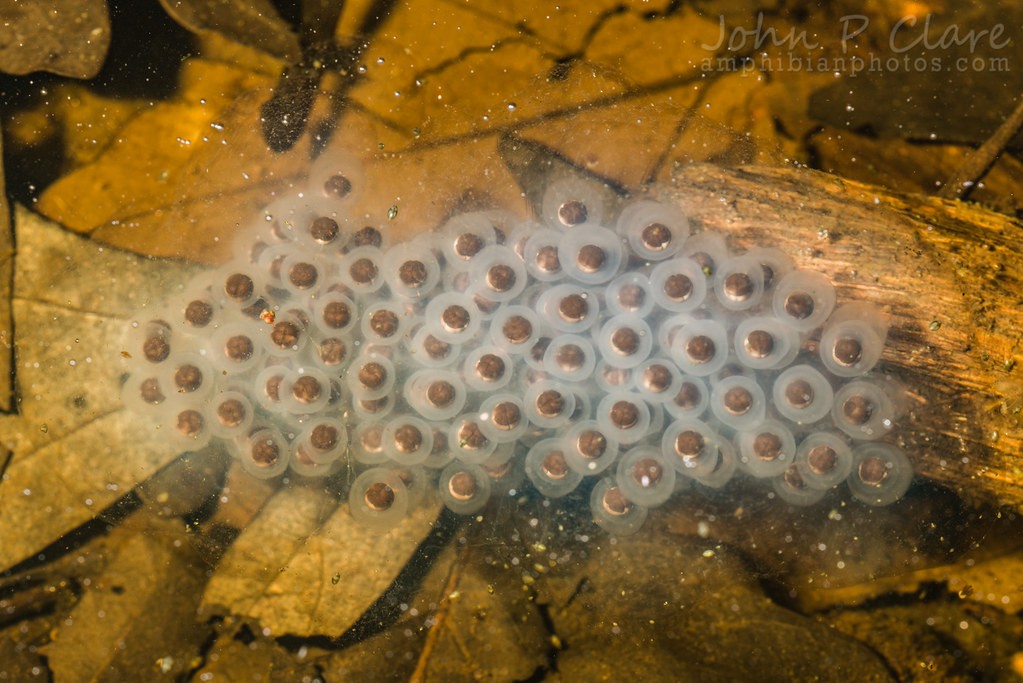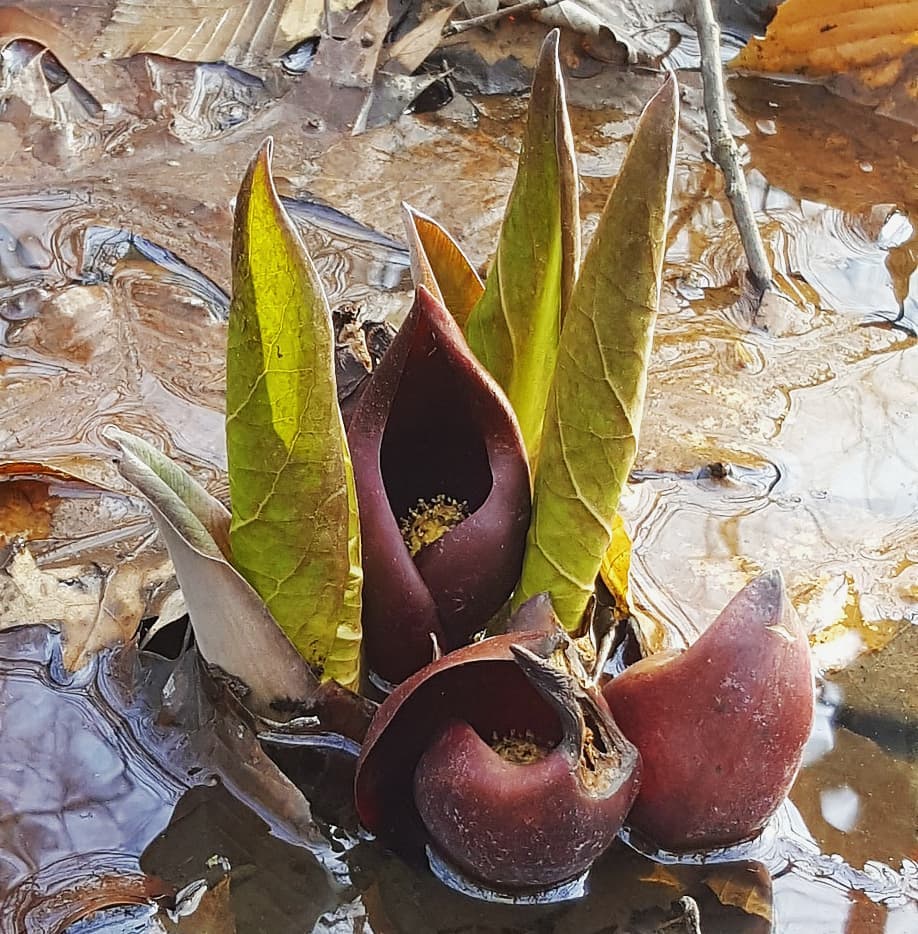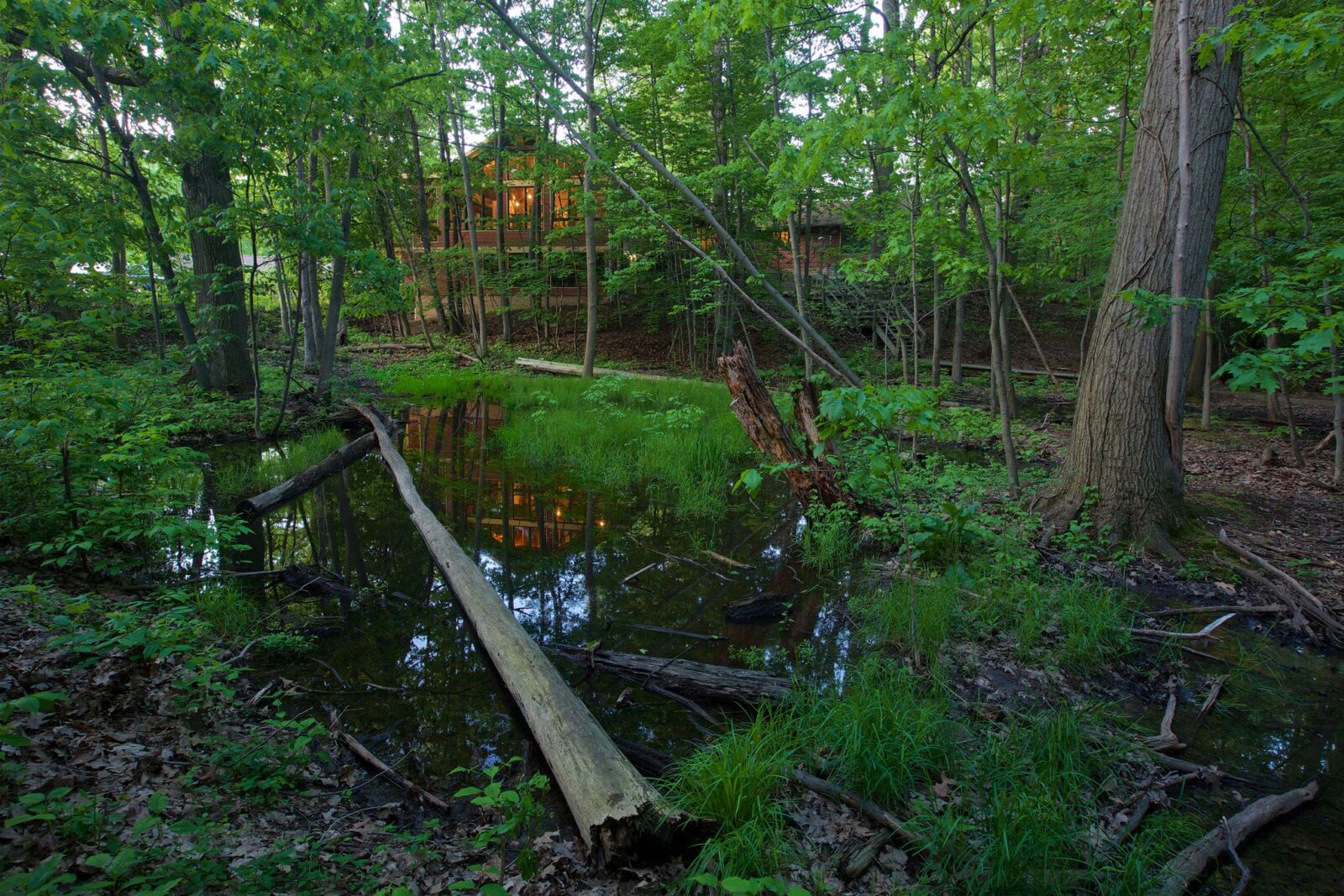In the simplest definition, vernal pools are nature’s nurseries. These small, unassuming pools are small, isolated, seasonal wetlands teeming with life. Vernal pools may form in deciduous forests like ours, but they are more typically associated with grasslands and rocky plains or basins.
Vernal pools go through three stages, or cycles, through the year and are dynamic, ever-changing and fascinating places to look for wildlife. Because of their hardpan layer, usually made of clay, they’re great at holding seasonal water. Because vernal pools are seasonal and not connected to a larger body of water, they are devoid of fish.
Spring rainfall creates perfect breeding habitat for amphibians like our resident red-backed salamanders and wood frogs, who find protection while they are still undergoing
metamorphosis. As the summer heats up, vernal pools dry up completely. Fall rains fill the pools once again, and in winter, water freezes over, keeping the life they contain in
hibernation (in reptiles and amphibians, this is called
brumation) until the natural cycle begins again in the spring.


Salamander eggs in a vernal pool.
WHY ARE VERNAL POOLS IMPORTANT?
Vernal pools tend to favor native species, as non-native species aren’t accustomed to their naturally fluctuating cycle. Animals that need fresh water to breed, such as insects, crustaceans, frogs, toads, and salamanders, are often found here in the spring. Eighty five percent (85%) of vernal pool amphibians return each year to breed in the pond where they were born (
Colburn, 2004). They will bypass other pools that provide suitable habitat and cross obstacles such as roads and other forms of human disturbance in order to return to the pool of their birth. This fidelity by individual amphibians to a particular pool is an important consideration when determining how to protect a species as a whole.
WHAT CAN BE FOUND IN VERNAL POOLS?
Some incredible, ecologically important flora and fauna can be found in these unique ecosystems. Water-adapted plants including button bush, skunk cabbage, cottonwood, pin oak, swamp white oak, red and silver maples, green ash, and sycamore can be found surrounding vernal pools.

Skunk cabbage (Symplocarpus foetidus). Photo by Ashley Hall.
Because vernal pools may look like “just a puddle” to some, they are being threatened by human development. As a result, most pools have been converted into residential zones, roads, and industrial parks. That is why most extant pools occur on protected or private land such as national parks, and ranches. Below, you’ll find more resources about these fascinating pools. Be sure to stop by the
Nature Center at Shaker Lakes to see one for yourself!




